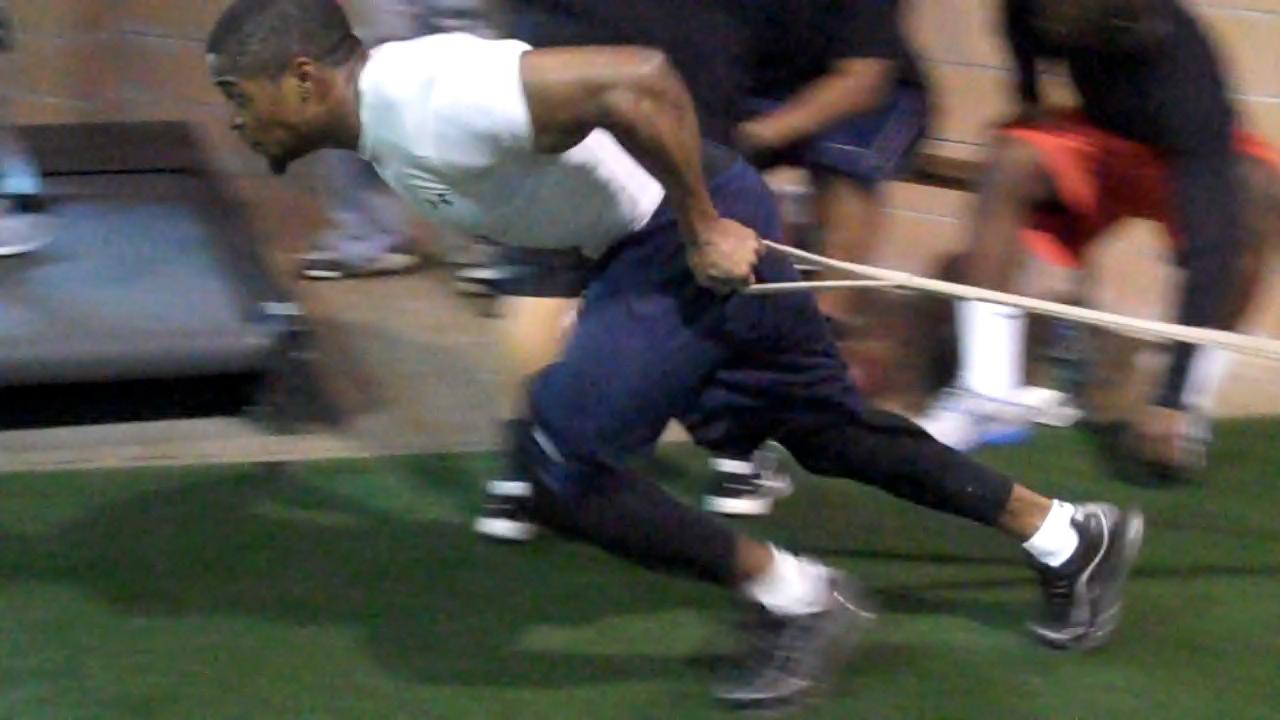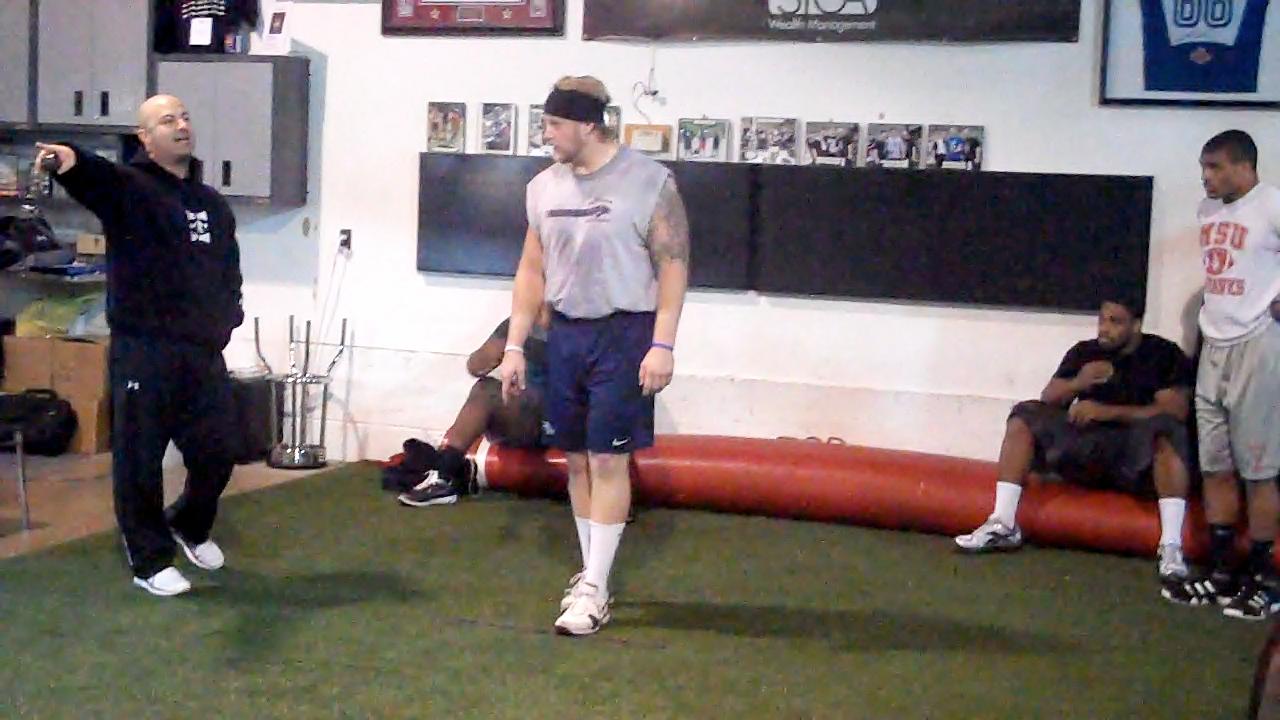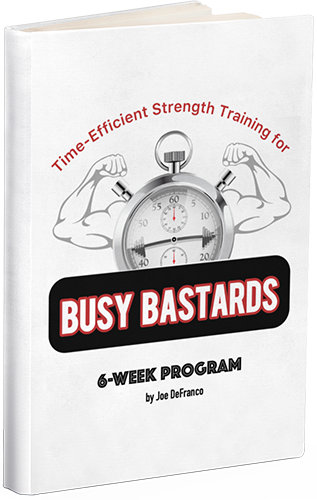
Q: Hey Joe D I recently purched power and it is amazing!! You guys opened my eyes to so many new exercises & concepts for developing explosive athletes..i cant even begin to tell u how much i learned. There is one part in the dvd that is confusing me though. In the intro you talk about the principle of dynamic correspondence and this was very interesting to me. This principle states: functional movement must also match the duration of movement, the intensity of movement, and the speed of movement or it isn’t functional for their sport.
This made a lot of sense to me….. but the thing that bugs me is that your Train Slow, Be Fast blog post was one of the most helpful posts I’ve ever read on your site. My athletes benefitted from your HASD’s in just one session, yet doesn’t that blog post completely contradict the principle of dynamic correspondence?? Have you changed your views since filming power?? Any input would be awesome, i realize your very busy during this time of year.. thanx coach!!
Darin
A: Darin,
Great question. You have definitely brought up an interesting point that I feel my readers would like me to address.
I will start my answer by quoting YOU. In your question, you say, “…your Train Slow, Be Fast blog post was one of the most helpful posts I’ve ever read on your site. My athletes benefitted from your HASD’s in just one session, yet doesn’t that blog post contradict the principle of dynamic correspondence?”
Here’s my advice: If you try something with your athletes and it works; it shouldn’t matter what the “research” says! If you want to ‘make it’ in this business and actually have athletes seek you out and pay you for your expertise, remember this quote: “RESULTS trump RESEARCH!” Athletes don’t give a shit “what the research says”; all they care about is what you do for them.
Don’t get me wrong; I have read countless books, articles, studies and translated texts regarding human performance — and I learned something from almost all of them. (In fact, my training library is so big I had to look into renting a storage unit when my twins were born lol!) With that being said, I’ve also learned that you shouldn’t believe everything you read. Every athlete is different and every situation is different. For example, you asked me about my “Heavy Ass Sled Drags” (HASD’s) contradicting the Principle of Dynamic Correspondence. You were correct; technically speaking, that exercise does contradict one of the principle’s taught by a world-renowned sport scientist (Yuri Verkhoshansky). Specifically speaking, the “speed & duration” of HASD’s does not match that of a 10-yard sprint. Therefore, it can’t be considered functional (according to Verkoshansky) with regards to improving your sprint times. Although I have the utmost respect for his research; I refuse to neglect any exercise or method based on someone else’s word…even if that person happens to be a lot smarter than me 🙂

During the past 15 years, I’ve prepared almost 200 athletes for the NFL Combine or their NFL Pro Day. During this time, I’ve watched these athletes perform over 12,000 ten-yard sprints! I don’t know of any “researcher” that has performed a 15-year study analyzing football players’ 10-yard sprint technique as it relates to their 40-yard dash performance. This is why I felt the urge to share the results I was getting when having my athletes perform this “contradictory” exercise. (FYI, most “sprint” research has been done with 100-meter sprinters. While there are some similarities between the 40-yard dash and 100-meter sprint, there are also many differences. This was also one of my motivations for getting my 40-yard dash “research” out there.)
My advice to all trainers and coaches would be to ‘read & respect’ the research, “borrow” what pertains to your athletes and discard what doesn’t. At some point, you must experiment on yourself and with your athletes so you can draw your own conclusions.

NOTE: The Principle of Dynamic Correspondence is definitely a principle of training that coaches should be aware of and respect. I can tell you that it does hold true most of the time (in my experience) – especially with advanced athletes looking to improve performance. This is why we address it in our best-selling POWER! DVD. (But – as I’ve already stated – you’re not obligated to listen to me or anyone else, besides yourself. So feel free to do your own research and draw your own conclusions.)
I will conclude this topic by making one final point:
I feel that there are two different types of ‘professionals’ in the “Sports Performance” field. On one hand, there are great coaches/trainers. On the other hand, there are great “researches/sport scientists“. They are both important with regards to the continued advances in human performance, but they are not necessarily interchangeable. When it’s all said and done, I personally would like to be remembered as a great coach. Sometimes my programming may have to be complicated… Sometimes it may contradict the best sport scientists and translated ‘Russian texts’… And sometimes it may be so damn simple it’s comical…
In the end, I hope people will remember me for the RESULTS I helped my athletes produce; regardless of what “method” I used to get them!

Do YOU have any “contradictory” training methods or exercises/ideas that ‘go against science’ or ‘challenge the research’, yet produced incredible results with your athletes? Share them with other readers by dropping us a comment below!
-Joe D.
Make 2012 your STRONGEST year ever! Check out the information-packed resources below…
NEW! >> EXTREME! 130+ Never-Before-Seen ‘Imperfection’ Exercises!
AMPED! The Most Comprehensive Warm-up System Ever Created!
POWER! Over 90 Exercises Proven to Build eXpLoSiVe Beasts!
SUPER STRENGTH! Joe DeFranco’s Strength Training System Revealed!






I’ve just found this post Joe. I think, particularly with western research, the focus can be excessively fragmented. Getting so hung up on one aspect to the detriment of the bigger picture a training process. Unfortunately, some popular fitness professionals (often glorified nerds) tend to do this and unfortunately some people hang off their every word.